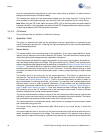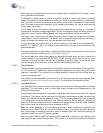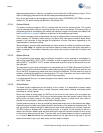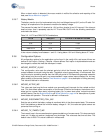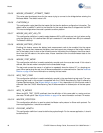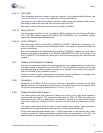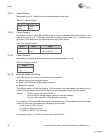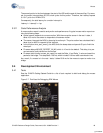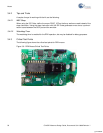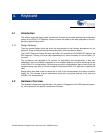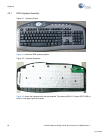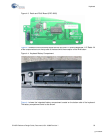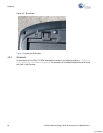
CY4672 Reference Design Guide, Document # 001-16968 Revision ** 47
Mouse
3.3.6.14 KISS_BIND
This configuration definition is used to selectively compile in the Enhanced KissBind feature. See
Enhanced KISSBind™ on page 18 for a description of Enhanced KissBind.
The mouse can be un-bound by holding the right and middle buttons, and pressing the Bind button.
After being un-bound, the mouse will enter an infinite loop until a POR.
After being un-bound, the mouse can be bound to a bridge by KissBind.
3.3.6.15 RSSI_QUALIFY
This configuration definition is used to enable the RSSI qualification for the Enhanced KissBind.
Only if the RSSI reading is above KISS_BIND_RSSI_THRESHOLD, can the KissBind request/
response be accepted by the Bridge/Devices.
3.3.6.16 AUTO_CONNECT
When the bridge is absent, after MOUSE_CONNECT_ATTEMPT_TIMES times of attempts to con-
nect to the bridge, the mouse enters the Briefcase Mode. In this mode, the mouse shuts down the
sensor to save power.
When the mouse enters the Briefcase Mode, if the AUTO_CONNECT is defined, the mouse tries to
connect to the bridge automatically every MOUSE_DISCONNECTED_POLL_MS seconds. If the
AUTO_CONNECT is not defined, the mouse tries to connect to the bridge only when the buttons are
pressed.
3.3.7 Platform and Architecture Portability
The mouse firmware was designed to be easily ported from one hardware platform to another plat-
form with a simple re-mapping of pins on the PRoC LP. The file
pdc9347.h maintains the pin map-
ping definitions that are used throughout the code and is included in about every file by using the
macro
PLATFORM_H that is defined in config.h.
Porting the code to another microprocessor architecture requires modification or leverage of the
existing code for processor specific features, along with pin definitions.
3.3.8 Initialization
Initialization of the PRoC LP chip is done by code that is generated in boot.asm by the PSoC
Designer software. The module
boot.asm calls main() in the mouse module once the Wireless PRoC
LP has been configured and initialized; see Mouse Module on page 42.
3.3.9 Wireless Protocol Data Payload
The mouse protocol has been optimized to reduce the ‘on-time’ of the radio, which equates to
reduced power consumption. This optimization relies upon the PRoC LP RDK requirement of a
three-button mouse. With this requirement, it is possible to combine the z-wheel and the button
report into a single byte, allowing five bits of information for the z-wheel and three bits for the but-
tons.
The protocol code module offers the ability to send variable length packets, thereby allowing a
reduced number of bytes to be transmitted over the air, in order to extend battery life.
Since mouse usage data demonstrates that X, Y optical sensor data is more frequent than z-wheel
or button presses, the following transmission packet formats are implemented in this RDK. The
packet formats only show the application payload and do not show the protocol packet format.
[+] Feedback






